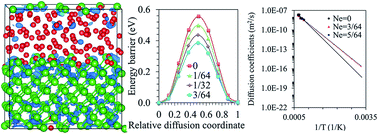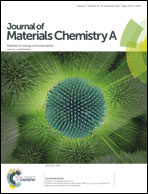Modelling and simulation of electron-rich effect on Li diffusion in group IVA elements (Si, Ge and Sn) for Li ion batteries
Abstract
Improvements in the electrical conductivity and lithium (Li) mobility for Li ion batteries are of particular importance for their high-power applications. Mapping of electron energy loss spectroscopy shows that the electrochemical reaction front region is under electron-rich conditions during lithiation. In this paper, the electron-rich effect on the diffusion behaviors of Li in pristine and phosphorus-doped group IVA elements, e.g., silicon, germanium and tin, were investigated using the first principles density functional theory (DFT) calculations in combination with a climbing-image nudged elastic band and ab initio DFT molecular dynamics. Phosphorus doping was found to be a non-critical factor for enhanced Li diffusion into Si. Instead, the results showed that the diffusion barriers and diffusivity of Li are mainly affected by the electron-rich effect, i.e. the energy barriers decrease and diffusivity increases in an electron-rich environment. The decrease in diffusion barriers was attributed to the relaxation of Si–Si bonds with extra electrons, which can also apply to the case of Ge but not for metallic Sn. These new findings provide a theoretical and experimental basis for the design and fabrication of next generation batteries with a high power density.


 Please wait while we load your content...
Please wait while we load your content...